Designer Sarah Cole Enlivens a Gothic Revival in Newton
The interior renovation fuses tradition with contemporary design.
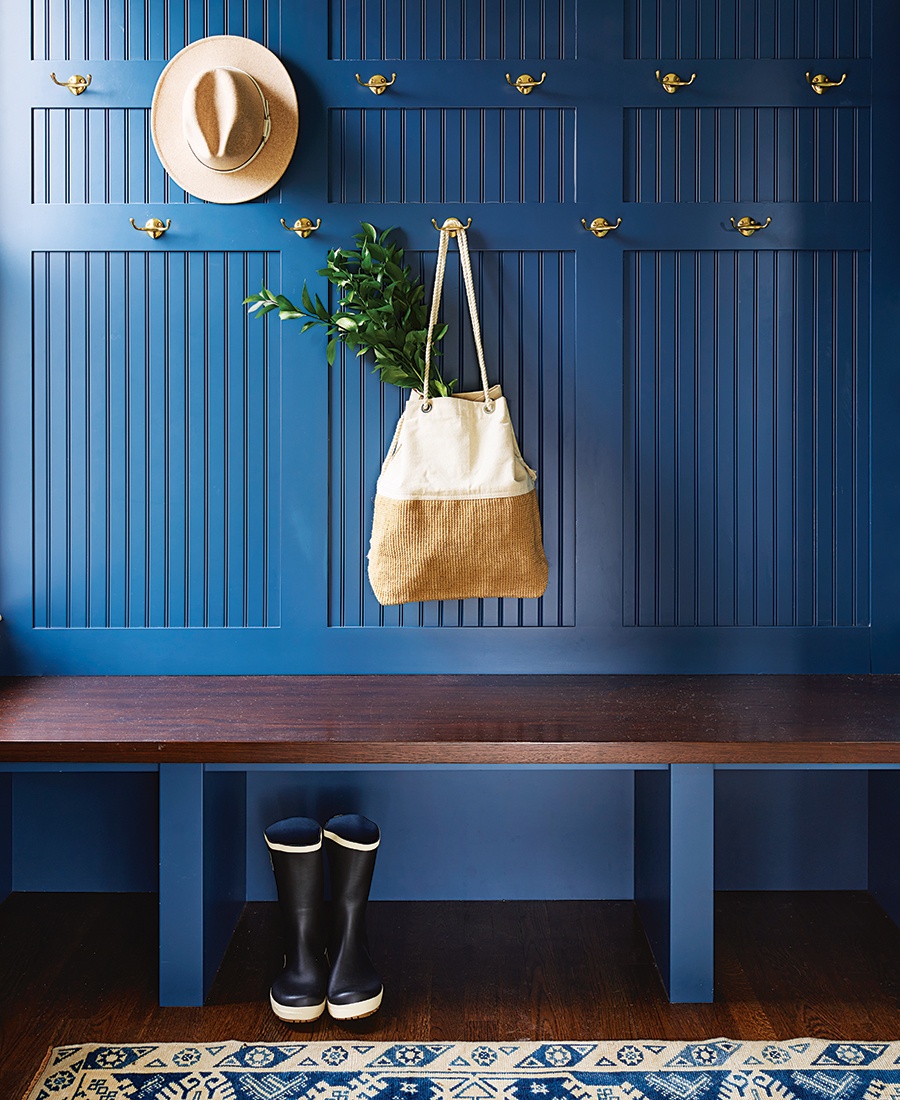
Photo by Jared Kuzia
Fine Art Consultant
Jacqueline Becker Fine Arts Consulting Services
Interior Designer
Sarah Cole Interiors
Woodworker
Grusby Woodworks
Sometimes, good design takes time. Such was the evolution of the interior of this Gothic Revival in Newton. After purchasing the home in 2011, the homeowners hired designer Sarah Cole in 2016 to upgrade the lighting and then came back to her in 2018 in search of a couch—that’s when things got interesting. “They lived there for quite a while and just never bought furniture. They were really busy,” Cole says. “They both work full time and have three children.”
But after some back and forth, the clients realized it made sense to do the entire living room, and the project snowballed from there. It turned into a complete renovation of their entire first floor and some bedrooms upstairs, so Cole and her team started putting together a concept for the house. “The wife gravitated toward a more modern aesthetic,” Cole notes. “But they [she and her husband] both loved the history and architecture of the home, so it was trying to find a way to make that work.”
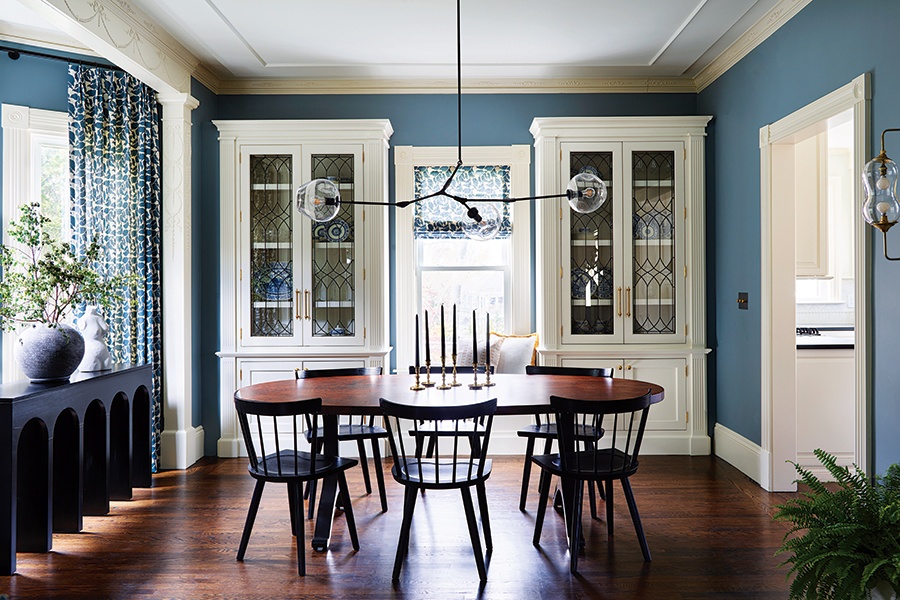
Photo by Jared Kuzia
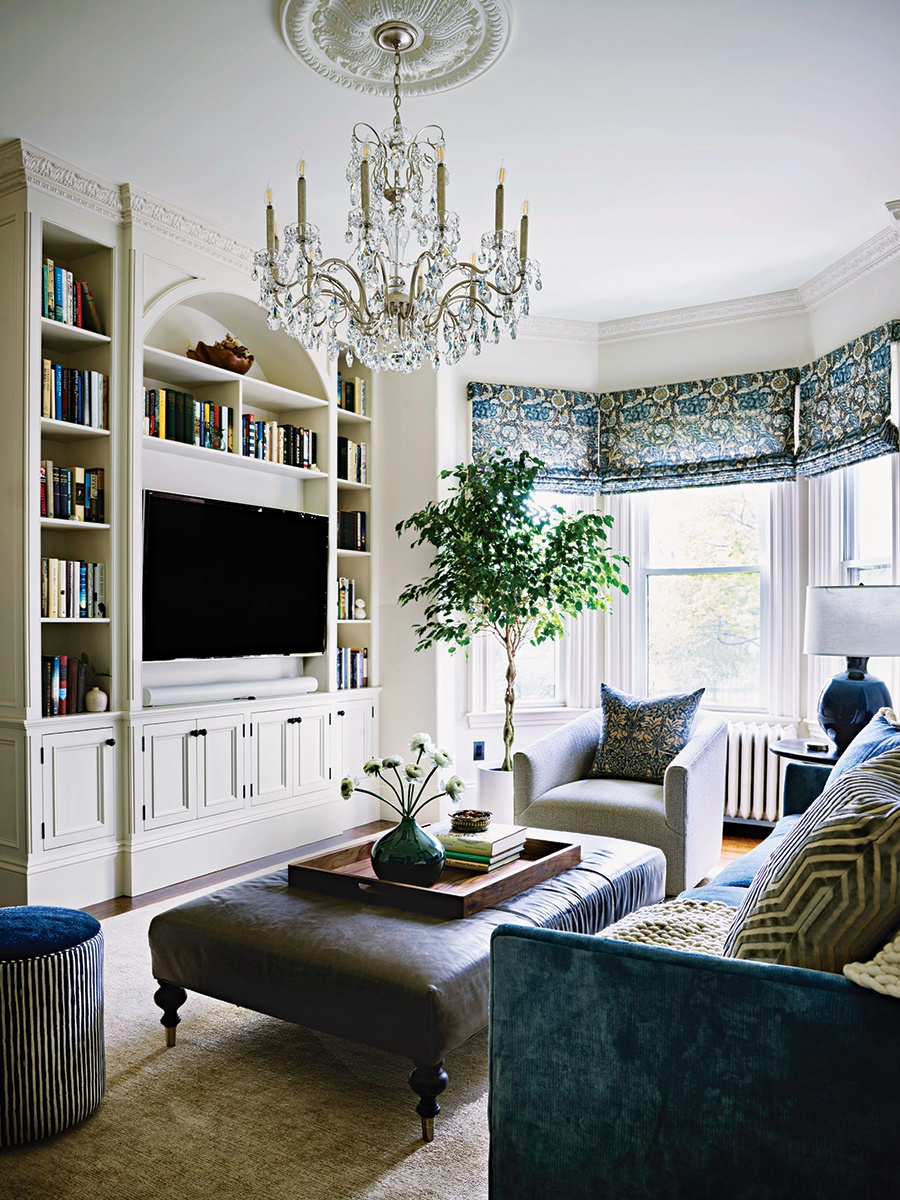
Photo by Jared Kuzia
LET THERE BE LIGHT
Cole always sees lighting as a real opportunity to bring a contemporary aesthetic to a traditional home. “There’s just something about that combination that works; it’s striking,” she says. Sourced from several vendors—including Lindsey Adelman, Allied Maker, and Hudson Valley (among others)—Cole says that even though they’re different manufacturers and artists, they all work together. “If you look from fixture to fixture, you’ll see that they’re all elongated, slim lines. I’m definitely drawn to that as a designer and picking up on other elements in a room, like the spindle-back chairs in the dining room. Having objects of similar lines works well to add more modern elements.”
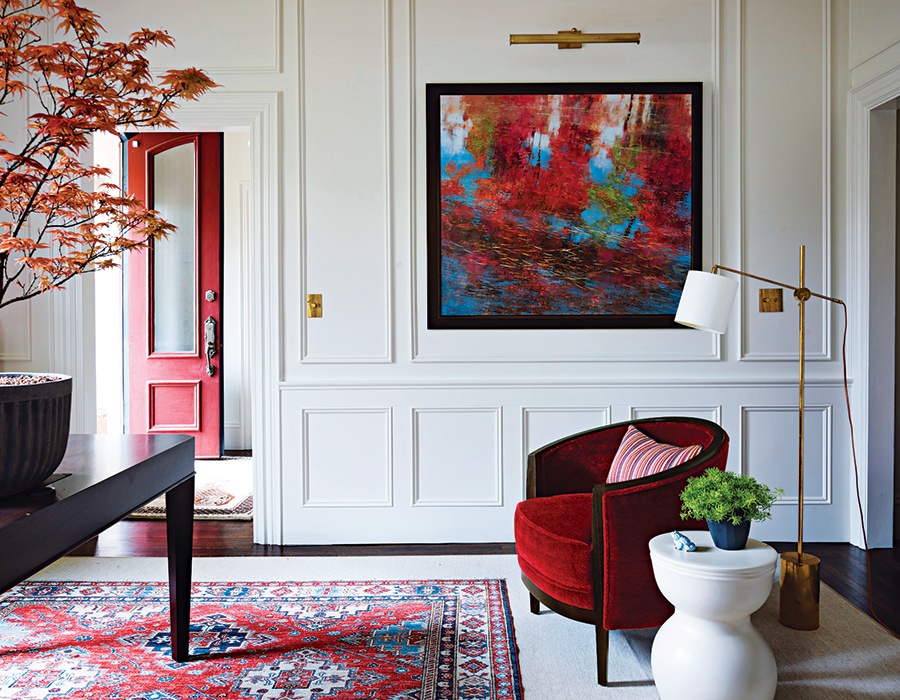
Photo by Jared Kuzia
THE ART OF EXPERTISE
The homeowners had a collection of beloved hand-knotted rugs that they purchased overseas, which really drove the color palette of the home. They also had a specific style of paintings they liked but didn’t know the artist’s name, so Cole turned to fine-arts consultant Jacqueline Becker, who—it turns out—knew exactly what they wanted. “When Jackie brought [the paintings] in, the clients were gravitating toward the more vibrant ones, so things shifted from a good use of traditional color to a bold use of more vivid colors,” explains Cole. She added that while the wife wanted a more modern aesthetic, she also favored using William Morris—the famed 19th-century textile designer associated with the British Arts and Crafts Movement—fabrics and wallcoverings in the home.
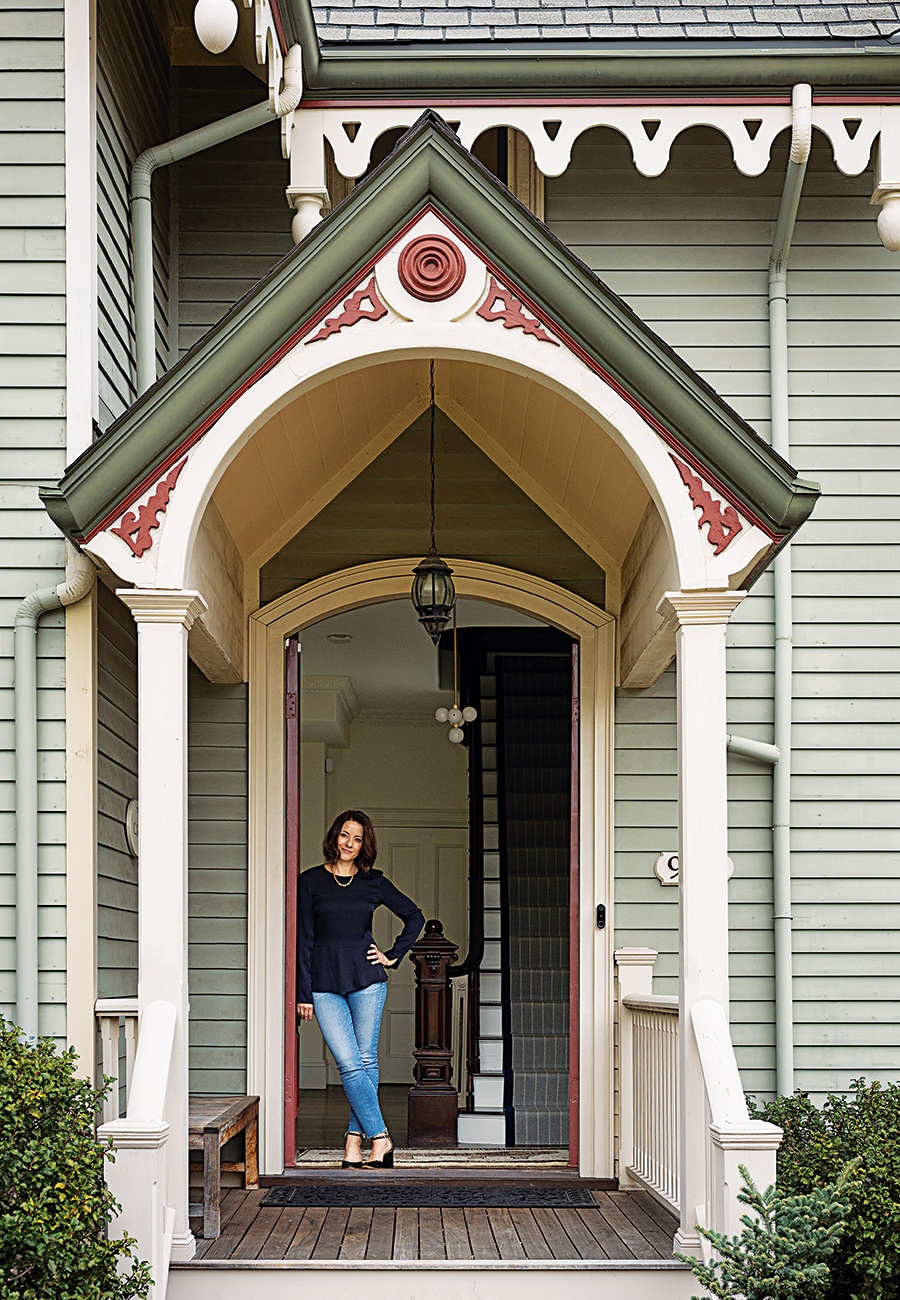
Photo by Jared Kuzia
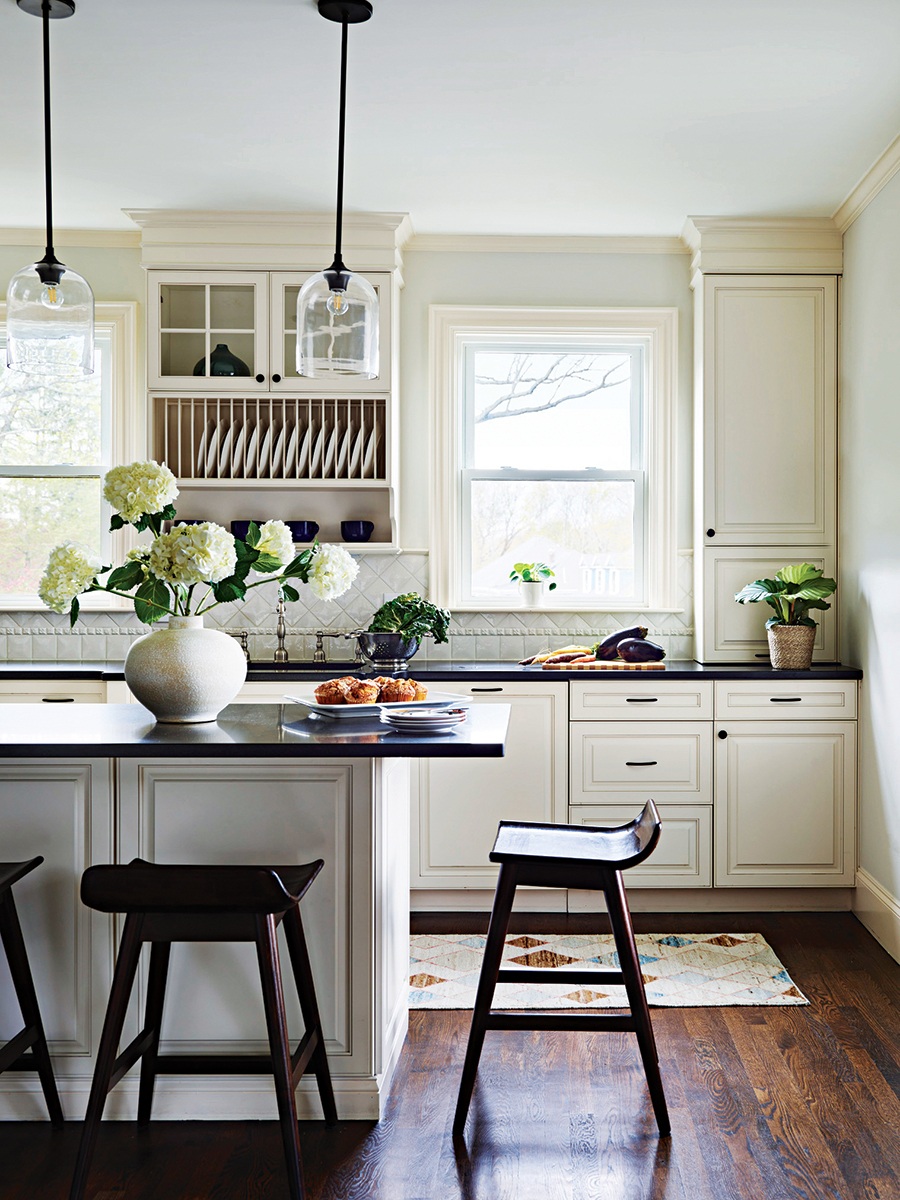
Photo by Jared Kuzia
AN HOMAGE TO HISTORY
Because the home is one of a handful in the area constructed during the 1870s, and the exterior was well-preserved, it was important to Cole and the clients to infuse some of that character within the interiors. “[The plaster] still had much of its gingerbread moldings and arched architecture, so we tried to bring that into the house,” she says. So the original wood and decorative plaster were restored throughout, and period-appropriate moldings and cabinetry were added to areas that lacked character. The custom-made china cabinets with leaded-glass doors and fluted wood columns in the dining room and the family room’s arched entertainment center—both crafted by Scott Grusby of Grusby Woodworks—are prime examples. For the plasterwork, helmed by Inspired Ornamental out of New Hampshire, the home office showcases a complementary combination of original crown molding with new revitalized additions.
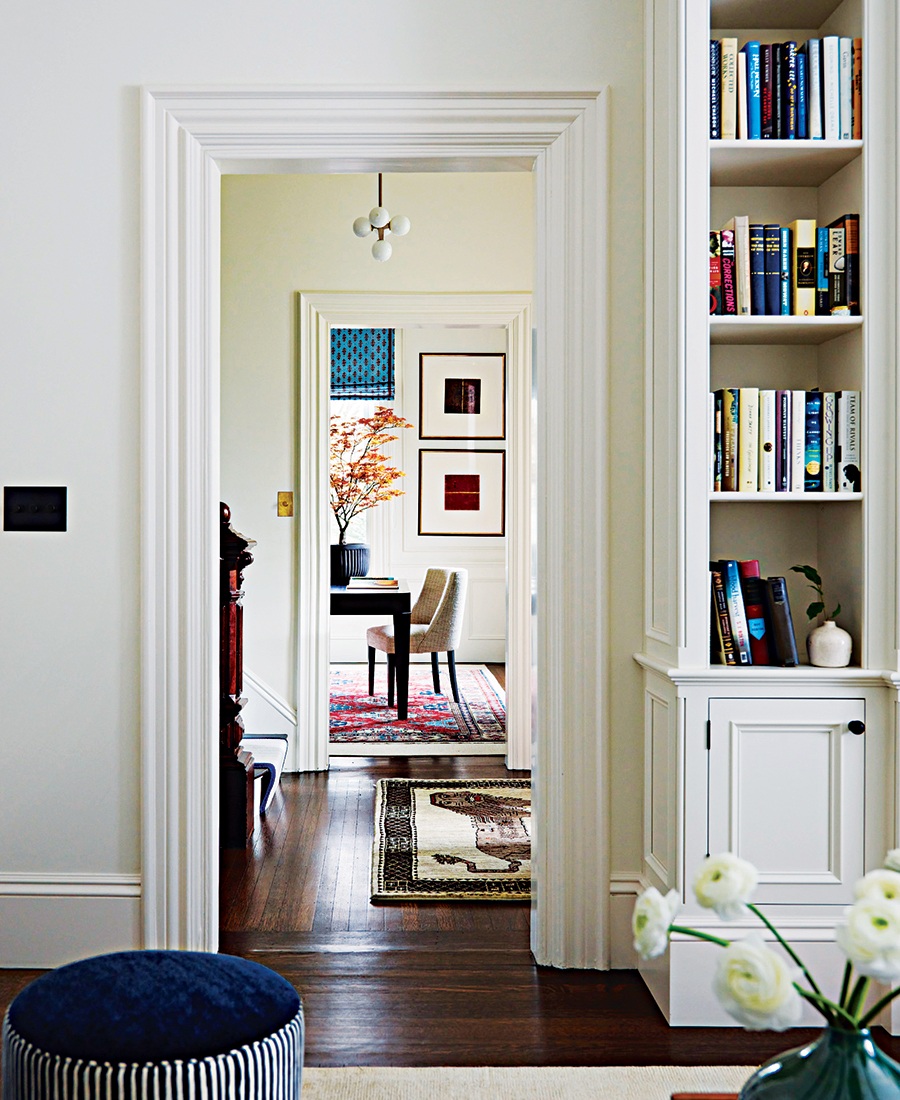
Photo by Jared Kuzia
BEHIND THE SCENES
Because the clients have a child with special needs, Cole and her team took careful consideration of all materials and shapes in the design process. “We were very conscious of that, and almost everything we picked out from performance fabrics and furnishings to harsh corners was trying to make it child- as well as pet-friendly,” Cole says, “but also at the level of a child who needs a little extra attention.” So durability was important to the clients, as were pieces like the runner on the stairs, which is a little softer and safer for their child with mobility issues.
First published in the print edition of Boston Home’s Spring 2023 issue.


